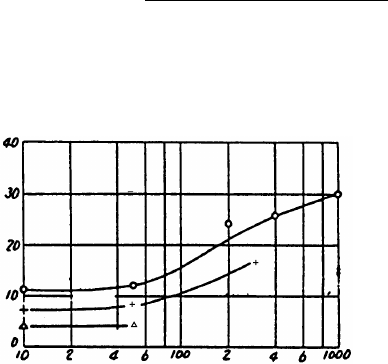
62
The product of the density (P) and the velocity (C) is called intrinsic
acoustic impedance and in the boundary between two media which
has extremely different C from each other, most of the acoustic power
is reflected and only a small portion penetrates. (In the boundary be-
tween water and air, the acoustic energy penetrates with a loss of
approximately 30 dB, that is approximately 0.1 % of the energy pen-
etrates from one medium to the other.)
Reflection from water which contains air bubbles is caused by the
fact that the cubic elasticity decreases in aerated water, causing the
intrinsic acoustic impedance to change.
In the actual sonar operation, adverse effect of air bubbles is shown
by interrupted display of target echoes which occurs while crossing
over the wake of another boat or when the sonar transducer passes
above the air bubbles generated by own ship.
Air bubbles in water have a resonant frequency of l5 kHz thru 100
kHz and hence the ultrasonic wave in this frequency range is most
strongly affected.
Reflection at Seabed and Fish School
The nature of the seabed is roughly classified into the following four
kinds: crag, sand, mud and seaweeds. In addition, shells and carcass
of animals (especially coral) imbedded in the seabed cause reflection
loss.
Reflection Loss Lb = 20 log
Incident sound pressure
Reflection sound pressure
(db)
The actual reflection loss in the sea is shown below. The reflection
loss remains almost constant up to 50 kHz and then gradually in-
creases.
Mud
Sand
Rock
Refelction Loss (dB)
Frequency (kHz)
The relation of frequency vs reflection loss for mackerel is shown
below. The calculated value and actually measured value nearly co-
incide. And also, on the contrary to the seabed reflection, the reflec-
tion loss decreases as the frequency increases. The “K” in the figure
is the coefficient of fish shape, where its larger value introduces smaller
reflection loss.


















